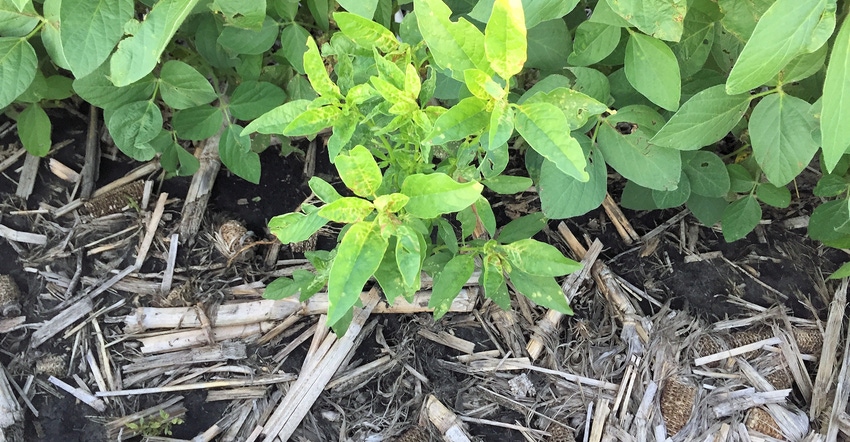January 11, 2017

By Paul Kassel
I can remember, like many of us who grew up on farms in the ’60s and ’70s, some vivid memories of walking beans. We called it “walking beans,” but it should have been called “cutting weeds out of soybean fields.”
The thought came to me while walking a bean field on our farm: Wouldn’t it be great if there was a herbicide that would control every plant but the soybean?
Fast-forward 30 years and that is exactly what we had when Roundup Ready arrived. Not only did this program kill all the weeds, it did it with relative ease. The herbicide was inexpensive, the application was easy, and the crop safety was good.
Fast-forward another 15 years, and I am walking beans again. This time I am not armed with a corn knife, but with my expertise as an agronomist, as I explain glyphosate resistance to a farmer. And yes, many had predicted that weed resistance to glyphosate would not occur, but there it was: waterhemp acting almost oblivious to the multiple glyphosate applications.
Since then, I feel farmers have adapted very well to glyphosate-resistant waterhemp. Farmers have embraced preemergence applications of herbicides on their soybean acres. They have also embraced the postemergence use of Group 14-PPO herbicides on their soybean acres.
More waterhemp resistance
Now there is concern that waterhemp has developed resistance to Group 14-PPO herbicides on a large scale. It has been confirmed by weed scientists for some time, but my concern is this issue is becoming more common.
The Group 14-PPO herbicides are not very high-tech; they essentially burn the leaves and growing points off of susceptible weeds. This “burner” technology is not a neat and clean remedy. Waterhemp and other susceptible weeds are often much larger than recommended when Group 14-PPO products are applied, so weed control is often less than complete. And since the soybean crop is burned also, we hope for good growing conditions to allow the soybean crop to recover.
So, I was again walking beans this summer, and the farmer was asking about incomplete control of waterhemp by the Group 14-PPO herbicides (generic Flexstar, in this case). The waterhemp was still greenish yellow following the Group 14-PPO herbicide application.
I offered to send in a sample to the University of Illinois to have the waterhemp tested for Group 14-PPO resistance. We collected five leaf samples, placed them in separate plastic sandwich bags and sent them overnight to Urbana. It was about a $100 adventure, including the university’s fee for testing and the overnight shipping fee.
The results were returned fairly quickly, and the test confirmed Group 14-PPO resistance. The waterhemp in the field did recover but did not really develop into a large problem.
With this information and experience in mind, I’m guessing that the waterhemp resistance issue with the Group 14-PPO herbicide products will continue to develop. Continuing to rely on postemergence herbicides to clean up waterhemp escapes probably isn’t an effective long-term solution to control this weed.
Focus on prevention
Our thought would be to focus more on waterhemp prevention, or increasing the use of preemergence herbicides. In some cases, we may have to apply both preplant incorporated products and preemergence products. Or there may be a need to use layered applications of preemergence products. Herbicides such as Outlook, Dual or Zidua may need to be applied before soybean emergence and after soybean emergence to prevent waterhemp establishment.
Remember, waterhemp tends to emerge later. It grows rapidly and by the time it is sprayed with a postemergence herbicide, it is often too big to kill. Preventing it from getting established is the more effective control strategy.
For more, visit weeds.iastate.edu.
Kassel is an ISU Extension agronomist at Spencer in northwest Iowa. Contact him at [email protected]
You May Also Like




